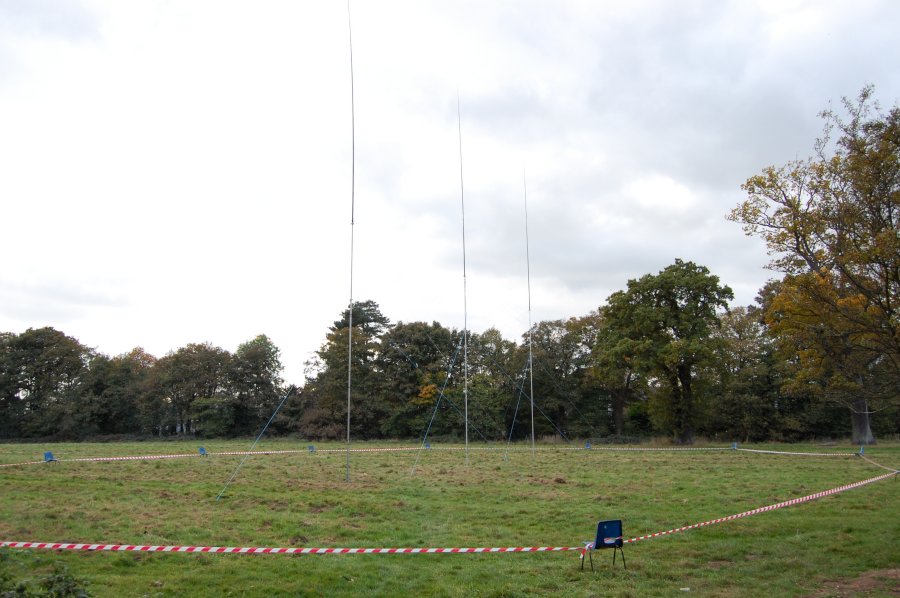
We finally built the 40m array on Saturday and conducted a full test on Saturday night, in preparation for CQWW this weekend coming (24th/25th Oct 2009). The good news is that signals bearly audiable on 40m on our standard Mega-Loop came up a few db on the array, to around 5 and 7.
The front to back ratio could be higher. Germans were crawling all over us, working Worked All Germany contest which was a good test, but it did hamper our out-and-out gain tests to US. Many of them probably switching off and saving their energy for next weekend. The modelling we went for gave us maximum gain at 10 degrees take-off. We could have gone for slightly less low-angle gain and instead aimed for a very high front-to-back ratio dialing in up to -15dB off the back. As it is, this current antenna only gives us around -6 db gain off the back. There are some benefits though, like working VK “off the back of the beam”, which I’ve never said before on 40m. Great fun.
Essentially, we have the gain of a non-steerable 4-square array so we should have fun into the top end of South America as well as all of North America, right up to Vancouver and Alaska.The proof of the pudding though, is this weekend and needing 40m to work all through the night, from 7 at night through to 7 in the morning – possibly more. This antenna needs to give us 12 hours out of each 24 hour slot, a must for a Multi-Two entry. Station #2 will have 160m, 80m and 20m to play with all night.
Remember to dial your logging program to update GetScores.org. A live scoreboard is hilarious fun for teams and will keep you on your toes all weekend.
Good luck and have a blast.
C.
 You will now have a structure that is effectively 20 meters tall (65 feet). Now then, the fishing pole blank will become the vertical part of an antenna which happens to be a quarter wave for 40 meter band. Being a raised antenna, we need radials and since we’re closer to the ground than a wavelength, we need a more than the traditional two radials to counteract the ground losses. We decided that 8 x radials will be about as good as 60 or so regular ground mounted radials. Do we have the maths right? We think so.
You will now have a structure that is effectively 20 meters tall (65 feet). Now then, the fishing pole blank will become the vertical part of an antenna which happens to be a quarter wave for 40 meter band. Being a raised antenna, we need radials and since we’re closer to the ground than a wavelength, we need a more than the traditional two radials to counteract the ground losses. We decided that 8 x radials will be about as good as 60 or so regular ground mounted radials. Do we have the maths right? We think so. Today, we did all the hard engineering and measured out all the bits and pieces, ready for a trial the week before CQWW. James and I laughed at the thought of how big this monster really is – and then wondered if it actually fit inside the park so as not to distrupt the walklers? Thank goodness we checked. For those of you unlucky enough to have been to our Scout Hut, you will know that when leaving our front doors, you will notice an oak tree in the distance that houses one corner of our mega-loop. James and I measured from the grass outside the doors to the last radial and we were only about 5 meters from the oak tree. Bloody hell!
Today, we did all the hard engineering and measured out all the bits and pieces, ready for a trial the week before CQWW. James and I laughed at the thought of how big this monster really is – and then wondered if it actually fit inside the park so as not to distrupt the walklers? Thank goodness we checked. For those of you unlucky enough to have been to our Scout Hut, you will know that when leaving our front doors, you will notice an oak tree in the distance that houses one corner of our mega-loop. James and I measured from the grass outside the doors to the last radial and we were only about 5 meters from the oak tree. Bloody hell!

